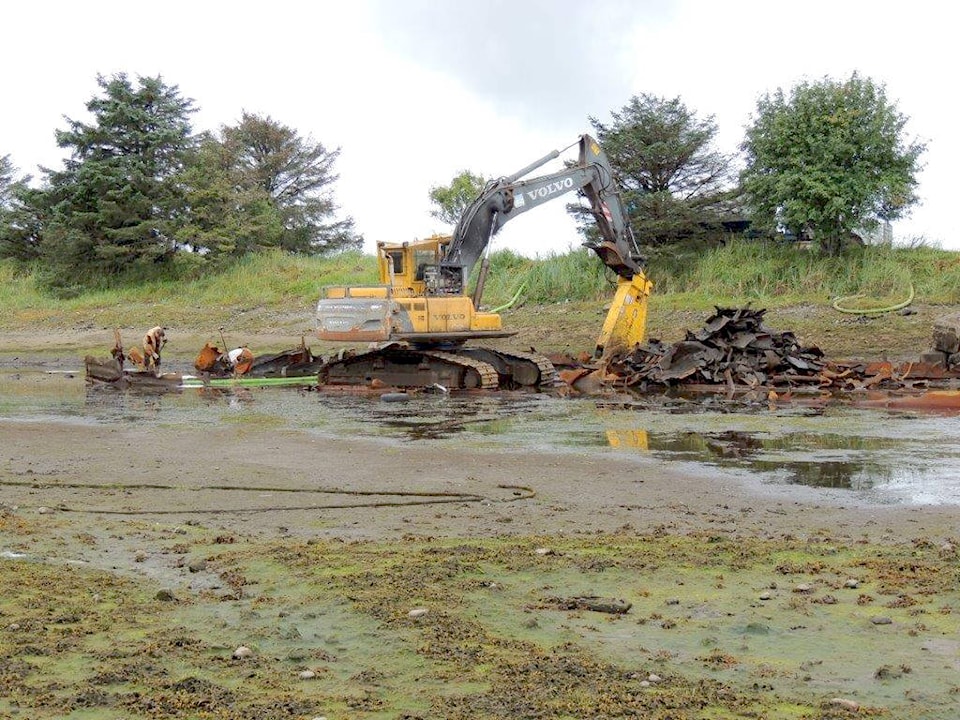By Margo Hearne
So it goes. We are into September and the migrants are on the move. Small flocks of small shorebirds run through the seaweed wracks on the high beach at high tide, ducks dabble in the sanctuary and a lone Tundra Swan sits on the grassy bank. It preens and rests and may not be in the best condition. Peter first saw it on June 23 in Swan Slough, the water body that cuts through the northwest of the Delkatla Wildlife Sanctuary. It’s the first time a Tundra Swan has ever been recorded here throughout the summer. In fact, Tundras are quite rare here; our usual wintering swans are Trumpeters, those of graceful flight and musical call. We are not sure why it remained, but it’s now been visible in the basin area for a week or so.
Offshore, flocks of waterfowl are cruising towards Rose Spit. From there they cut around the island and head south. Research over the years has proven that most migrants go through Hecate Strait and not along the west coast of Haida Gwaii. The strait is relatively sheltered and has patches of shallow water where feed accumulates. Birds get battered about on their long journeys on the western edges.
Prior to some of the fiercer gales that roar through here, many diving ducks gather in the southeast bays: scoters, goldeneyes, mergansers. Birds have always been harbingers of storms, and those that lived on and near the sea throughout the millennia have watched them carefully. Before the digital revolution, it was the only forecast we had. We have frequently seen huge concentrations of birds tucked in along the Tlell shoreline when travelling to Prince Rupert a day before a southeaster hits. I guess they felt it in their feathers. They, like humans, don’t like getting caught out in it.
The trip across last week was fairly quiet. There were very few birds, unusual for this time of year. A few Northern Fulmars, those graceful birds that shear over the waves, but very few Sooty Shearwaters. Peter and I have now made 299 daytime crossings across the straits recording birds. It’s been quite the adventure. We have seen some fabulous birds and, on average, the crossings have been relatively calm.
However, like most islanders that have taken the run, we’ve been out in a few doozies, especially prior to the decision not to run in seas over four metres. The ferries could handle the seas but it made for wild discomfort, even danger, for passengers. Once the Queen of Prince Rupert was hit by one of those rogue waves during a daytime crossing and our friend Dorothy, who was upright in her cabin, fell right over. No. Calm seas are the way to travel and thanks to all the crew that take us there and back safely. By the way, did you know that our ferries are not actually “ferries”? They are classified as car-carrying passenger ships because they travel over greater distances in exposed waters.
There are major cleanups occurring in town. The rusty old barge that has been sitting at the seaplane spit for years is almost completely gone. It was situated in the major bird-use area of Wylie Creek Estuary and has been both an eyesore and a source of pollution for years. Ducks Unlimited has also completed their culvert replacement on the Stepping Stones Trail in Delkatla to allow for more tidal flooding. The birds will be happy.
On a sadder note, Bald Eagles are dying of lead poisoning. Up to five have been recovered and shipped out for autopsy. Reliable sources tell us that they may have eaten shot-gunned, pit-lamped deer. Investigations are underway.
